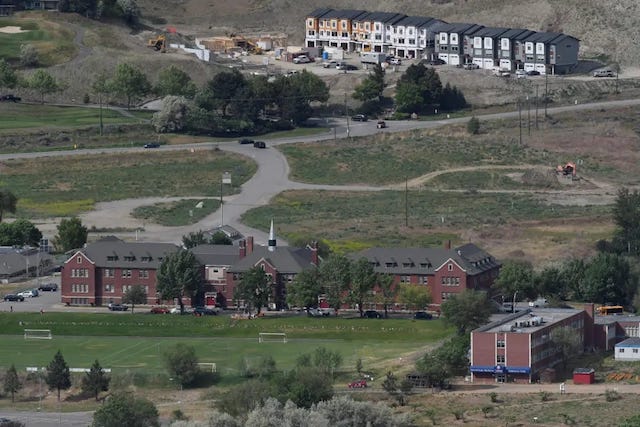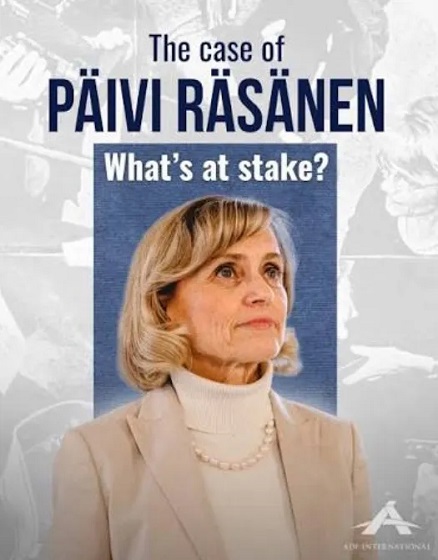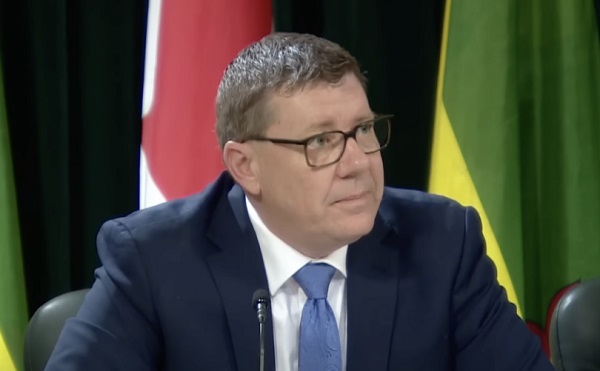Opinion
From mass graves to mass hysteria

The grounds of the former Kamloops Indian Residential School in British Columbia, where some believe Indigenous students may be buried — though there have not been any excavations. – Reuters
The Opposition with Dan Knight
A Canadian Teacher Fired for Challenging the Narrative on Residential Schools—Where’s the Evidence, Where’s the Justice?

|
I am a teacher buffeted daily by the chill winds of political indoctrination, censorship, conformity, and anti-education in schools.
|
The New York Post reported this month that “after two years of horror stories about the alleged mass graves of Indigenous children at residential schools across Canada, a series of recent excavations at suspected sites has turned up no human remains.” In July 2021 the Assembly of First Nations claimed the “mass grave discovered at the former Kamloops Indian Residential School was proof of a “pattern of genocide against Indigenous Peoples that must be thoroughly examined.”
Yet the Canadian government already examined residential schools from 2008-15 through The Truth and Reconciliation Commission, with Commission Chair Murray Sinclair telling the media the number of missing children “could be in the 15-25,000 range, and maybe even more.” To date there has not been a single missing child identified, and not a single document from a parent or chief indicating a child was missing from any of the almost 150 schools over almost 150 years.
I’m not ignorant of the subject of our past as I am informed on the subject of Indian Residential Schools as I am a member of the pan-Canadian Indian Residential Schools Research Group. I also did a Master’s degree in Educational History with specialization in Indian Educational Policy under the supervision of Dr. Robert Carney, who was once the leading expert on the schools. I also obtained a Ph.D. from the University of Toronto where I argued A Case Against Censorship in Literature Education. Professionally, I have taught in high schools, elementary schools, and colleges and was for a time Principal of Neuchâtel Junior College in Switzerland. My last position was in Abbotsford as a senior French Immersion History teacher. It is to Abbotsford that I now turn, for that is where I was fired.
One fateful day in May 2021 I was teaching Calculus 12 at a high school named after the painter Robert Bateman where news was feverishly spread about the discovery of the remains of 215 children in a mass grave at the site of the long-shuttered Kamloops Indian Residential School. The principal used the PA system to ask teachers to stop their regular instruction to navigate the upsetting news with students. In this context, I spoke about the history of residential schools, the dislocation and despair of prairie First Nations (most residential schools being located in the Canadian west), the Indian Act (1876) and its authors’ intentions to support its most marginalized communities, the role of the church as teachers and proselytizers, and the reports of abuse and neglect.
As it was a math class, some of the students were uninterested or bored by my history soliloquy, but one girl spoke up to say the schools represented “cultural genocide.” I agreed with her by saying that modern western schooling was mandatory for indigenous children after 1920, and a third of these children were placed in residential schools (another third attending day schools, and the final third receiving no education at all).
I considered the discussion to be like any other, with some students engaged and others on their phone or quietly doing equations, until a second student, flush with anger and indignancy, reacted to my comment that children who died tragically while enrolled in residential schools did so mostly from disease. She said the Christian teachers in Kamloops (Oblate priests and brothers as well as nuns from the Catholic order The Sisters of St. Ann) were “murderers who tortured students to death by leaving them out in the snow to die.”
I didn’t say anything more, for I feared an argument, and directed students to return to their Calculus work. The class was given a break a few minutes later, and unbeknownst to me the girl complained to a counsellor, who told the principal, who told the district, and before class was over that day, I had a visit from two male administrators who commanded me in front of my students to gather my things and leave. While being frog-marched through the corridor I repeatedly asked what I had done wrong, but they wouldn’t answer. When I was close to the front door I turned to them and said I wouldn’t be leaving without hearing from the principal what I had done. This request was granted, but all the principal would say to me was that it was something I said.
My suspension ended after eight months when the district released its investigator’s report, to which senior management appended a charge of professional misconduct, as the following excerpts show:
“While acting as a TOC for a Calculus 12 class, Mr. McMurtry…inferring [sic] that many of the deaths were due to disease was in opinion inflammatory, inappropriate, insensitive, and contrary to the district’s message of condolences and reconciliation.”
“He left students with the impression some or all of the deaths could be contributed to ‘natural causes’ and that the deaths could not be called murder.”
“Both Mr. McMurtry and student accounts had some students passionately saying the deaths were murder, [and] the graves were mass graves.”
“[We] consider this to be extremely serious professional misconduct.”
While on suspension I dug into the grave story of murdered children and found I was right. Indeed, there was no discovery at all at the residential school in Kamloops in the middle of the Tkʼemlúps te Secwépemc reserve. No graves. No bodies. No murder weapons. No police investigation. No historical record or documentation from a parent or tribal leader of a missing child. Nonetheless, prime minister Justin Trudeau unilaterally ordered that our country lower its flag from coast to coast and in our embassies around the world for over five months, though all that Culture/Media professor Sarah Beaulieu (the sole source of the story) found, using ground-penetrating radar in an abandoned apple orchard on the reserve, were soil anomalies, likely sewage trenches or tiles from 1924. My judgment day was February 21, 2023. The Abbotsford School District trustees had to pronounce on a recommendation for termination from management. That very day I saw that the National Post featured my story on Page 1. I was suddenly under a deluge of support from many media platforms, especially Rebel News which sent a reporter to cover the disciplinary hearing. I boldly predicted in front of supporters that my case was strong and the tide in Canada was turning against cancel culture and its witch hunts, but I was wrong. I was fired and will likely never teach again. Canadian historian Marcel Trudel wrote:
“There is nothing more dangerous than history used as a defense; or history used for preaching; history used as a tool is no longer history.”
I would add that there is nothing more dangerous, in these times, than teaching history truthfully.
In my termination letter this February the case against me changed again, this time it was no longer about what I said but only my “inflammatory, inappropriate, and insensitive tone” that one day two years ago. Then this August I received a letter from the regulatory body for teachers, called the Teaching Regulation Branch (formerly the BC College of Teachers), which changed the case against me again. Now I am accused of “falsely suggesting that student deaths at the schools were comparable to the general child mortality rate and not the result of a government strategy of cultural genocide.” In the same letter the TRB calls for the cancellation of my teaching certificate for life… before my case has arrived at arbitration, before an arbitrator has been chosen or dates have even been set, and long before the merits of my case have been fairly determined.
In Kafka’s play The Trial there is a familiar quotation:
“Someone must have been telling lies about Josef K., he knew he had done nothing wrong but, one morning, he was arrested.”
Subscribe to The Opposition with Dan Knight
I’m an independent Canadian journalist exposing corruption, delivering unfiltered truths and untold stories. Join me on Substack for fearless reporting that goes beyond headlines
Opinion
Religion on trial: what could happen if Canada passes its new hate speech legislation

Just in time for Christmas, the Liberals make a deal with the Bloc that will suppress religious expressions of belief
(The Rewrite will return to its usual format in 2026. In the meantime please enjoy this republication of Peter Menzies’s take on Bill C-9 and its threat to free speech and freedom of religion. And, please, have a Merry Christmas)
If you want to get some sense of what life in Canada could be like if the federal government’s new hate speech law passes, check out Finland.
There, Päivi Räsänen, a medical doctor and Member of Parliament, and Bishop Juhana Pohjola of the Evangelical Lutheran Mission Diocese of Finland are awaiting the verdict of their third hate speech trial – all for the same issues – since 2019.
The prospect of a similar future “Bible Trial” now hangs over Canada thanks to the minority government’s openness to making a deal with the Bloc Quebecois to get Bill C-9 – An Act to amend the Criminal Code (hate propaganda, hate crime and access to religious or cultural places) – passed.
Already contentious, the contemplated amendment that would remove the current protections for sincerely held religious belief, could very well stifle the ability of Christians, Muslims, Jews and others to freely refer to their most sacred texts.
As the Canadian Conference of Catholic Bishops puts it: “the removal of this provision risks creating uncertainty for faith communities, clergy, educators, and others who may fear that the expression of traditional moral or doctrinal teachings could be misinterpreted as hate speech and could subject the speaker to proceedings that threaten imprisonment of up to two years.
“Eliminating a clear statutory safeguard will likely therefore have a chilling effect on religious expression, even if prosecutions remain unlikely in practice.”
Rasanen, Finland’s former Interior Minister, was charged under a section of the Finnish criminal code titled “war crimes and crimes against humanity” after jointly publishing a 2004 pamphlet with Pohjola that described traditional religious views on marriage and sexuality. Also involved were a 2019 live radio debate and a Tweet in which she questioned a decision by Finland’s majority church, the Finnish Evangelical Lutheran Church, to formally support a Helsinki Pride event.
Both she and Pohjola were acquitted at their initial trial and, again unanimously, upon appeal. The prosecution, determined to get convictions, then took the case all the way to Finland’s Supreme Court, where the third trial wound up on Oct. 30. At the time of writing, a verdict is pending. The accused face up to two years in prison if convicted.
Given that a total of six judges have, so far, not been convinced thay quoting Bible passages constitutes a hate crime, that level of punishment seems unlikely. But as Rasanen has written “the greatest danger is the threat of society-wide censorship and the crushing effect on freedom of speech and religion. A judgment against me would open the floodgates to a broad ban on the public expression of religious views or other beliefs and the threat of modern book burnings.”
While that may alarm those of us who still adhere to increasingly old-fashioned views on freedom and liberal democracy, there’s no doubt that the move to suppress religious expression – and some of its very unfashionable concerns regarding sexuality – has a strong fan base.
Quebec, where a crucifix inexplicably remains mounted in the National Assembly, appears particularly keen on this approach. Its Bill 21 banned the wearing of religious symbols or clothing by certain public employees and is now being extended to daycare workers and others. Its “burka ban” also insists a person’s face must be uncovered when receiving public services and is making it illegal to pray in public without government permission.
Prompted by the mass Islamo-Leftist coalition demonstrations that have occupied Montreal’s streets for the past two years, it seems unlikely that one would be busted for bowing one’s head to commune with the Almighty while sitting on a park bench. But the fact that it might be possible could just be enough to discourage one from doing so.
This is why the Bloc Quebecois is so keen to assert its leverage within a minority Parliament and stands ready to assist its passage if the exemption (“if, in good faith, the person expressed or attempted to establish by an argument an opinion on a religious subject or an opinion based on a belief in a religious text”) within current hate speech legislation for people sincerely motivated by their faith is removed.
Indeed, Bloc leader Yves-Francois Blanchet believed he had a deal but that the Liberals, led by a regular attendant at Roman Catholic Mass – Prime Minister Mark Carney – “fear a backlash” and may try to find another dance partner. That hesitance, according to Blanchet, may have motivated the suspension of a (Dec. 4) House of Commons Justice Committee.
Conservative MP Andrew Lawton also wondered on X if the committee was putting the bill on hold, stating “The Liberal chair of the Justice Committee says he cancelled today’s Bill C-9 meeting so MPs could “regroup.” He refuses to say whether he’ll call next Tuesday’s meeting.”
The deal now appears to be locked in, although Justice Minister Sean Fraser promised concerned faith groups he would hear them out over the winter.
Meanwhile, the very idea that the exemption might be removed has lit up Conservative Leader Pierre Poilievre, who, already opposed to Bill C-9 because of its restrictions on free speech, declared that it would “criminalize sections of the Bible, Qur’an, Torah and other sacred texts.”
I don’t know that it would. But it could. And that should be enough to alarm all those who believe in a God greater than the state. Just in time for Christmas, or whatever our politicians call it these days.
We note with sadness the passing Wednesday of Peter Arnett, whose work will be remembered vividly by those old enough to recall the first Gulf War and CNN’s hey day.
A New Zealander and later American too, Arnett made his name in war zones reporting for Associated Press, beginning in Vietnam. He won a Pulitzer prize for his sins, experienced controversy and lived to be 91. He tried and that’s all you can ask. Farewell, faithful servant.

Readers will notice a new DONATE button has been added. Please consider making use of it and help us save journalism from bad journalism.
(Peter Menzies is a commentator and consultant on media, Macdonald-Laurier Institute Senior Fellow, a past publisher of the Calgary Herald, a former vice chair of the CRTC and a National Newspaper Award winner. This commentary originally appeared in Epoch Times Canada)
The Rewrite is a reader-supported publication.
To receive new posts and support my work, consider becoming a free or paid subscriber.
Business
There’s No Bias at CBC News, You Say? Well, OK…

It’s been nearly a year since I last wrote about the CBC. In the intervening months, the Prescott memo on bias at the BBC was released, whose stunning allegations of systemic journalistic malpractice “inspired” multiple senior officials to leave the corporation. Given how the institutional bias driving problems at the BBC is undoubtedly widely shared by CBC employees, I’d be surprised if there weren’t similar flaws embedded inside the stuff we’re being fed here in Canada.
Apparently, besides receiving nearly two billion dollars¹ annually in direct and indirect government funding, CBC also employs around a third of all of Canada’s full time journalists. So taxpayers have a legitimate interest in knowing what we’re getting out of the deal.
Naturally, corporate president Marie-Philippe Bouchard has solemnly denied the existence of any bias in CBC reporting. But I’d be more comfortable seeing some evidence of that with my own eyes. Given that I personally can easily go multiple months without watching any CBC programming or even visiting their website, “my own eyes” will require some creative redefinition.
So this time around I collected the titles and descriptions from nearly 300 stories that were randomly chosen from the CBC Top Stories RSS feed from the first half of 2025. You can view the results for yourself here. I then used AI tools to analyze the data for possible bias (how events are interpreted) and agendas (which events are selected). I also looked for:
- Institutional viewpoint bias
- Public-sector framing
- Cultural-identity prioritization
- Government-source dependency
- Social-progressive emphasis
Here’s what I discovered.
Story Selection Bias
Millions of things happen every day. And many thousands of those might be of interest to Canadians. Naturally, no news publisher has the bandwidth to cover all of them, so deciding which stories to include in anyone’s Top Story feed will involve a lot of filtering. To give us a sense of what filtering standards are used at the CBC, let’s break down coverage by topic.
Of the 300 stories covered by my data, around 30 percent – month after month – focused on Donald Trump and U.S.- Canada relations. Another 12-15 percent related to Gaza and the Israel-Palestine conflict. Domestic politics – including election coverage – took up another 12 percent, Indigenous issues attracted 9 percent, climate and the environment grabbed 8 percent, and gender identity, health-care worker assaults, immigrant suffering, and crime attracted around 4 percent each.
Now here’s a partial list of significant stories from the target time frame (the first half of 2025) that weren’t meaningfully represented in my sample of CBC’s Top Stories:
- Housing affordability crisis barely appears (one of the top voter concerns in actual 2025 polls).
- Immigration levels and labour-market impact.
- Crime-rate increases or policing controversies (unless tied to Indigenous or racialized victims).
- Private-sector investment success stories.
- Any sustained positive coverage of the oil/gas sector (even when prices are high).
- Critical examination of public-sector growth or pension liabilities.
- Chinese interference or CCP influence in Canada (despite ongoing inquiries in real life).
- The rest of the known galaxy (besides Gaza and the U.S.)
Interpretation Bias
There’s an obvious pattern of favoring certain identity narratives. The Indigenous are always framed as victims of historic injustice, Palestinian and Gazan actions are overwhelmingly sympathetic, while anything done by Israelis is “aggression”. Transgender representation in uniformly affirmative while dissent is bigotry.
By contrast, stories critical of immigration policy, sympathetic to Israeli/Jewish perspectives, or skeptical of gender medicine are virtually non-existent in this sample.
That’s not to say that, in the real world, injustice doesn’t exist. It surely does. But a neutral and objective news service should be able to present important stories using a neutral and objective voice. That obviously doesn’t happen at the CBC.
Consider these obvious examples:
- “Trump claims there are only ‘2 genders.’ Historians say that’s never been true” – here’s an overt editorial contradiction in the headline itself.
- “Trump bans transgender female athletes from women’s sports” which is framed as an attack rather than a policy debate.
And your choice of wording counts more than you might realize. Verbs like “slams”, “blasts”, and “warns” are used almost exclusively describing the actions of conservative figures like Trump, Poilievre, or Danielle Smith, while “experts say”, “historians say”, and “doctors say” are repeatedly used to rebut conservative policy.
Similarly, Palestinian casualties are invariably “killed“ by Israeli forces – using the active voice – while Israeli casualties, when mentioned at all, are described using the passive voice.
Institutional Viewpoint Bias
A primary – perhaps the primary job – of a serious journalist is to challenge the government’s narrative. Because if journalists don’t even try to hold public officials to account, then no one else can. Even the valuable work of the Auditor General or the Parliamentary Budget Officer will be wasted, because there will be no one to amplify their claims of wrongdoing. And Canadians will have no way of hearing the bad news.
So it can’t be a good sign when around 62 percent of domestic political stories published by the nation’s public broadcaster either quote government (federal or provincial) sources as the primary voice, or are framed around government announcements, reports, funding promises, or inquiries.
In other words, a majority of what the CBC does involves providing stenography services for their paymasters.
Here are just a few examples:
- “Federal government apologizes for ‘profound harm’ of Dundas Harbour relocations”
- “Jordan’s Principle funding… being extended through 2026: Indigenous Services”
- “Liberal government announces dental care expansion the day before expected election call”
Agencies like the Bank of Canada, Indigenous Services Canada, and Transportation Safety Board are routinely presented as authoritative and neutral. By contrast, opposition or industry critiques are usually presented as secondary (“…but critics say”) or are simply invisible. Overall, private-sector actors like airlines, oil companies, or developers are far more likely to be criticized.
All this is classic institutional bias: the state and its agencies are the default lens through which reality is filtered.
Not unlike the horrors going on at the BBC, much of this bias is likely unconscious. I’m sure that presenting this evidence to CBC editors and managers would evoke little more than blank stares. This stuff flies way below the radar.
But as one of the AI tools I used concluded:
In short, this 2025 CBC RSS sample shows a very strong and consistent left-progressive institutional bias both in story selection (agenda) and in framing (interpretation). The outlet functions less as a neutral public broadcaster and more as an amplifier of government, public-sector, and social-progressive narratives, with particular hostility reserved for Donald Trump, Canadian conservatives, and anything that could be construed as “right-wing misinformation.”
And here’s the bottom line from a second tool:
The data reveals a consistent editorial worldview where legitimate change flows from institutions downward, identity group membership is newsworthy, and systemic intervention is the default solution framework.
You might also enjoy:
Is Updating a Few Thousand Readers Worth a Half Million Taxpayer Dollars? |
||||||
|
||||||
| Plenty has been written about the many difficulties faced by legacy news media operations. You might even recall reading about the troubled CBC and the Liberal government’s ill-fated Online News Act in these very pages. Traditional subscription and broadcast models are drying up, and on-line ad-based revenues are in sharp decline. | ||||||
|
Subscribe to The Audit.
For the full experience, upgrade your subscription.
-

 Business2 days ago
Business2 days agoArgentina’s Milei delivers results free-market critics said wouldn’t work
-

 espionage1 day ago
espionage1 day agoCarney Floor Crossing Raises Counterintelligence Questions aimed at China, Former Senior Mountie Argues
-

 Health14 hours ago
Health14 hours agoFDA warns ‘breast binder’ manufacturers to stop marketing to gender-confused girls
-

 Daily Caller14 hours ago
Daily Caller14 hours agoTrump Reportedly Escalates Pressure On Venezuela With Another Oil Tanker Seizure
-

 Business23 hours ago
Business23 hours agoTaxing food is like slapping a surcharge on hunger. It needs to end
-

 Energy1 day ago
Energy1 day ago75 per cent of Canadians support the construction of new pipelines to the East Coast and British Columbia
-

 Business2 days ago
Business2 days agoDeadlocked Jury Zeroes In on Alleged US$40 Million PPE Fraud in Linda Sun PRC Influence Case
-

 Health20 hours ago
Health20 hours agoAll 12 Vaccinated vs. Unvaccinated Studies Found the Same Thing: Unvaccinated Children Are Far Healthier








